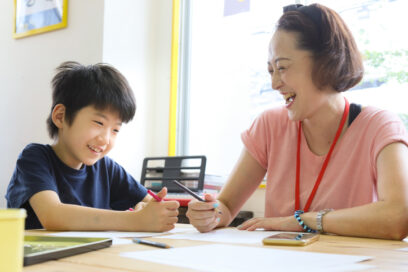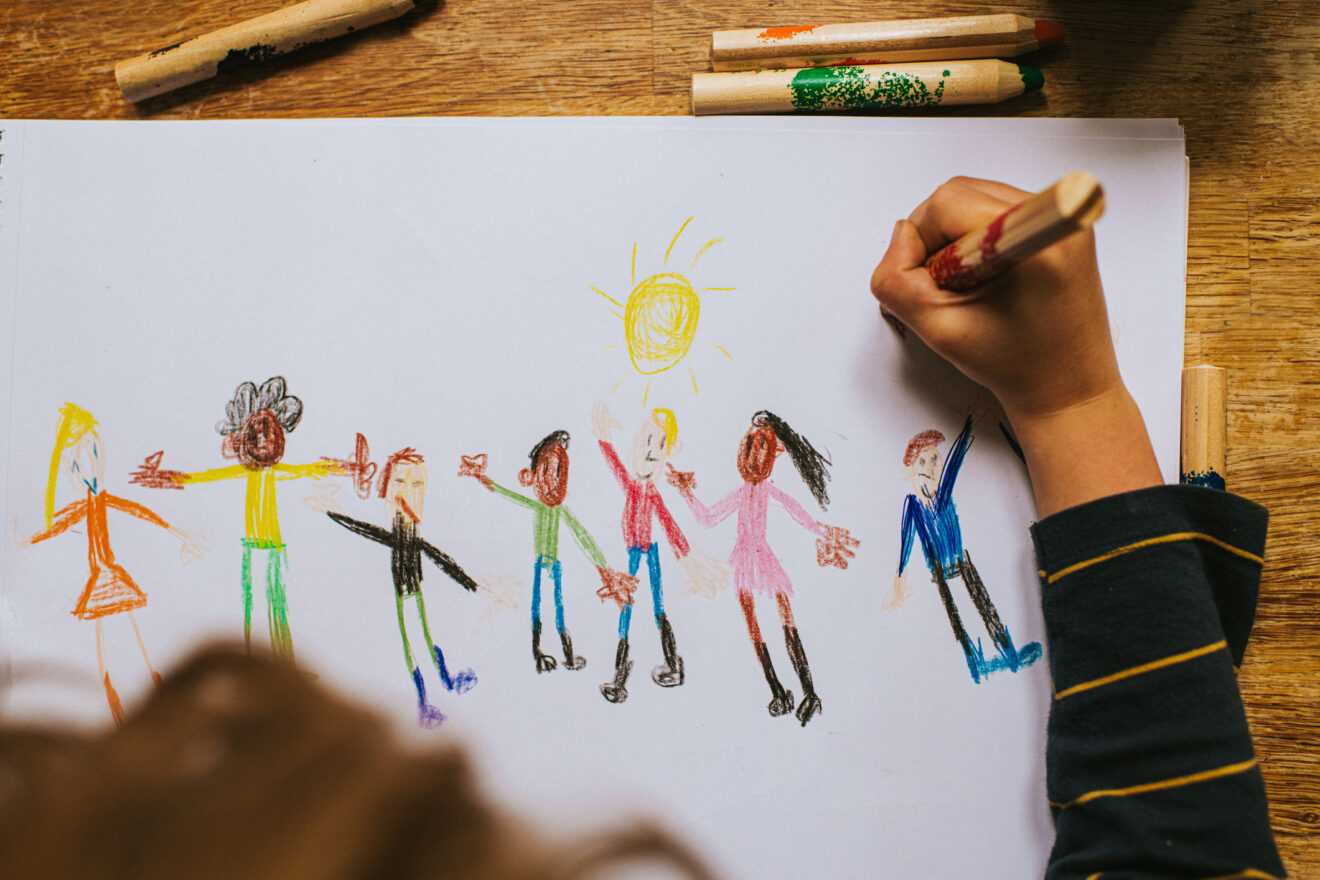For the first three weeks of class, I taught Cooper from his mother’s lap. While Cooper was a remarkably bright 12-year-old, his severe anxiety and depression brought on by middle-school bullying resulted in an assessment of a fourth-grade reading level. His previous teachers had labeled him as despondent, and his refusal to engage with them or his peers was viewed as oppositional. They hadn’t tried an effective 1:1 model.
Cooper was most responsive when the whole family was gathered around the dinner table discussing their menagerie of animals; so, we replicated that in our 1:1 classroom. We made up stories about the animals in Mesopotamian mosaics. In week two, Cooper started crafting his own mosaics on the classroom walls using Post-it notes to tell stories of what his pets would have done in Mesopotamia.
By our fourth week, Cooper dismissed his mom as we scrawled across the classroom walls pretending to paint the inside of Egyptian tombs. By the end of the year, Cooper was elected middle-school student union president, and he showcased pictures of his mosaics and paintings at the Spring art show.

What research says about personalized learning
Even before enrolling in a 1:1 school, Cooper’s parents did everything right. They listened to their son and moved him from a traditional public school into a charter school with smaller classes, which research has shown improves a student’s achievement. They provided him with personalized, intensive tutoring, which has been proven to support student’s academic growth.
While they saw some success with these shifts, it did not meet Cooper’s core need: to regain trust in learning. His parents balked at enrolling him in the 1:1 model for fear he wouldn’t flourish socially and would be off-track to attend a traditional four-year college.
The focus on mastery learning and community-building that is found in 1:1 schools provided Cooper with the chance to step into a different kind of learning experience that champions holistic growth. In just a single school year, Cooper’s entire persona shifted from one of despondence to one of empowerment, while his assessed reading level rocketed from fourth to eighth grade.
Though this growth was revolutionary to his family and support system, research shows that such is typical of most students impacted by personalized learning. A Rand 2017 study proved that students who were below the national norm at the beginning of the school year approached or met national norms by the end of the year when they switched to the 1:1 classroom setting. Students who remained in the 1:1 model for two or more years were found to surpass the national norm.
How to translate 1:1 model benefits to larger classrooms
As a 1:1 teacher for seven years and a manager of instructional programs for the past three years, I know we, as an educational community, can take certain steps to reap these same benefits in our schools and learning environments despite class size.
Lean in and learn
Acknowledge that learning is an act of risk-taking and can be soothed by creating a community where students feel seen and heard. Starting class with a scavenger hunt or game of Bingo where they have to identify fellow students who share interests and experiences can help us understand who our students are. To dig even deeper, asking students to complete a “Would you rather” questionnaire can reveal specific fears, goals and motivators.
Differentiate learning paths
Once we better understand the driving factors behind our students, we want to release some control and allow them to choose the path that their academic journey takes. This can include using choice boards, playlists and menus so students can determine how they want to learn and prove mastery of a skill or concept. Co-creating discussion norms, grading rubrics and graphic organizers saves teachers time in preparing lessons while building our student’s skills around time management, self-advocacy and metacognition.

Be a curious kid
Instead of rigidly following a meticulously crafted lesson plan, we can allow ourselves to fall down interesting rabbit holes with our students and ride certain tangents that they take. If a student shows passion for something related to but not in perfect alignment with the learning target, offer them a chance to showcase their knowledge and interests through a “Tangent Talent Show” or “Passion Podium.” This celebrates the student’s interests, builds their social-emotional skills and validates their learning journey.
Model failing forward
In my experience, teachers are perfectionists. This places us at a precarious crossroads in which we need to show our students that failure is part of learning but also don’t want to be the example. Yet, we can’t coach and teach our students to rebound from failure if we don’t model it ourselves. Take time in class to have students respectfully correct you when you make errors, provide students with opportunities to give feedback to you when you provide feedback to them, and verbalize when you misunderstand or misinterpret something.
At the core, the success of the 1:1 model rests on building authentic relationships with our students and their caregivers by meeting our students where they are. This is in alignment with child psychologist Ross Greene, who stated that “kids do well if they can.” In other words, students are not despondent by nature. Instead, there is an unmet need that is hindering them from engaging in their learning. Once we identify and meet that need, students flourish academically, socially and emotionally.
Danielle Peloquin, Ed.D., is an educator, researcher and instructional designer in secondary and higher education with a focus on social justice, diverse learners, professional development and adult education.
Opinions expressed by SmartBrief contributors are their own.
_________________________
Subscribe to SmartBrief’s FREE email newsletter to see the latest hot topics on special education. It’s among SmartBrief’s more than 250 industry-focused newsletters.
